Fields Store Elementary School
Standardizing Excellence:
Quality in Design for Education Hospitality
In education, the adage “you get back what you put in” is particularly relevant. Creating a successful school where students thrive requires more than teaching standard curriculum. Cultivating conscientiousness and healthy habits are important aspects of a well-rounded education. Numerous studies show that one simple way to accomplish these objectives is through food. “There is an undeniable link between nutrition and better school performance,” says Alex Rios, project manager for The Edu-Source Corporation – a dealer specializing in modern dining rooms with furniture, art and décor for the K-12, college, and university education markets.
The emphasis on food culture in education started changing on the Federal level in 2010 with Michelle Obama’s “Healthy, Hunger-Free Kids Act.” – which aims to improve nutrition and provide a hunger safety net for millions of children by reforming public school breakfast and lunch programs. The more students eat in the cafeteria, the more funding the school receives. Yet, connecting the dots between nutrition and school performance requires more than an enticing menu. “We work with schools to promote health and nutrition by making it more inviting to eat in the cafeteria,” says Rios. “We make a modern restaurant atmosphere and give it the feel of a welcoming, upscale space. In doing so, we help our clients motivate students to be healthier and more active.”
However, creating an attractive eating environment in a public school funded by tax money presents some challenges. In addition to budget constraints, the furniture must be mobile and able to withstand the daily use of hundreds of children – as well as subsequent cleaning.
Ken Blanchard’s observation that “None of us is as smart as all of us,” holds true in this instance. Through collaboration with architectural firm Interior Systems Inc., mobile folding furniture manufacturer SICO® America Inc. and High Pressure Laminate (HPL) supplier Wilsonart, The Edu-Source Corporation brings schools high-style designs that are both practical and within budget.
Designing for Excellence
Over winter break of 2014/2015, The Edu-Source Corporation facilitated the renovation of the cafeteria and kitchen at the Fields Store Elementary School in Waller, TX. Although more than 55 percent of the student body comes from disadvantaged backgrounds, the school enjoys a reputation for excellence, including receiving the National Blue Ribbon Schools Program award in 2014. In addition to academics, this 4K-fifth grade elementary school emphasizes physical and social pursuits. Combined, these characteristics make Fields Store Elementary a perfect example of how healthy food culture feeds healthy minds. The only thing missing was an interior matching the intention.
“For this project, the objective was to take an outdated space and turn it into something that was both age-appropriate and enticing,” says Karen Gasparick, an interior designer in Interior Systems Inc.’s education division. “We were given the directive to incorporate maroon –the district color – as well as paw prints to tie into the school’s mascot. Beyond that, we had free rein to create something dynamic for the kids.”
Interior Systems, Inc. developed a palette of bright colors and used engaging graphics reminiscent of comic books to celebrate the school’s values and achievements.
“Furniture is a big part of the design, both in function and aesthetics,” says Gasparick. “We usually go with a pattern on the tabletops to hide scratching and wear and tear a little better, but on the seats we like Wilsonart’s new solid color Laminate. Especially in education design, vibrant colors are really important, and it is hard to find them in some laminate lines. They tend to either be imported with long lead times, or geared toward residential applications. Our group is very excited about Wilsonart’s bold colors and solids because we have lots of opportunities to implement them.”
In addition to standard designs, Interior Systems, Inc. used Wilsonart’s custom laminate program WilsonartXYou to designate special areas in the cafeteria. “Our group created the custom graphic for the ‘allergy zone,’ and Wilsonart produced it precisely and sent it directly to SICO®, our fabrication partner,” says Gasparick. “It looks fantastic.”
Serving Students
After The Edu-Source Corporation translates a school’s idea and Interior Systems, Inc develops the design concept/finish palette, SICO builds the mobile folding tables to order. “Even though we have a standard construction for most of our tables, the wide range of Wilsonart’s HPL colors and surface designs lets our clients, in effect, customize their products,” says Chris Dickey, senior product development engineer for SICO – a Minneapolis based OEM manufacturer of mobile folding products for education, hospitality and leisure products. “Add the capability to get custom graphics, and the options are endless.”
What makes SICO an industry leader in the segment however, is the company’s reputation for quality, safety and service. “We use Wilsonart® HPL in most of our products for many reasons. It is UL GREENGUARD Gold certified, which is important for materials going into schools. Plus, the surface is durable and easy-to-clean, even in long-term usage – and we warrant our products for 15 years against manufacturer’s defects and for lifetime on welds,” says Dickey.
“The consistency of the material is also important. It allows us to automate certain processes. Without programmable tooling and predictable materials, repeatability is nearly impossible, particularly on specialty shapes. Because our products fold and move, precision is paramount in ensuring safety.”
SICO tabletops are typically built from Wilsonart® Laminate laid up on MDF. The substrate is homogenous and without voids, which is ideal for SICO’s branded Armor-Edge technology. This spray-on edge treatment hermetically seals the tabletop and bench edges. It is so durable the products can even be steam cleaned.
Creating customized cafeteria environments to increase engagement and improve the overall health of a student body requires commitment on every level. “A lot of the education projects we support happen in the summer when school is out,” says Dickey. “People expect shorter lead times for production, and so much of that comes back to supplier relationships. Every one needs to work together. Completing jobs on time and within budget is a reflection of strong customer interaction, knowledgeable designers and suppliers that are responsive and anticipate demand.”
Click here for a PDF of this case study.

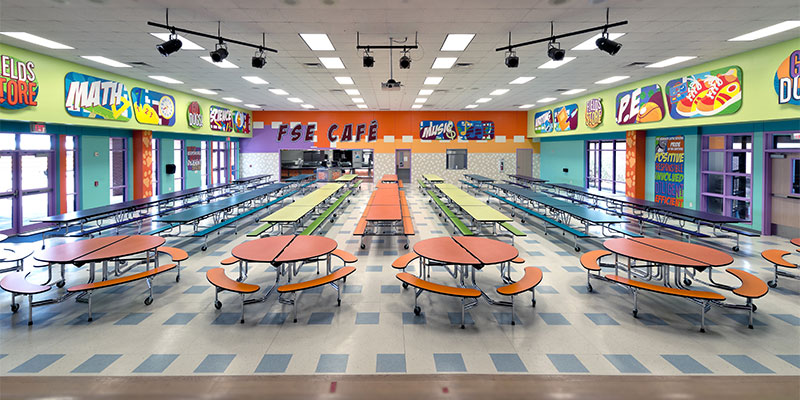
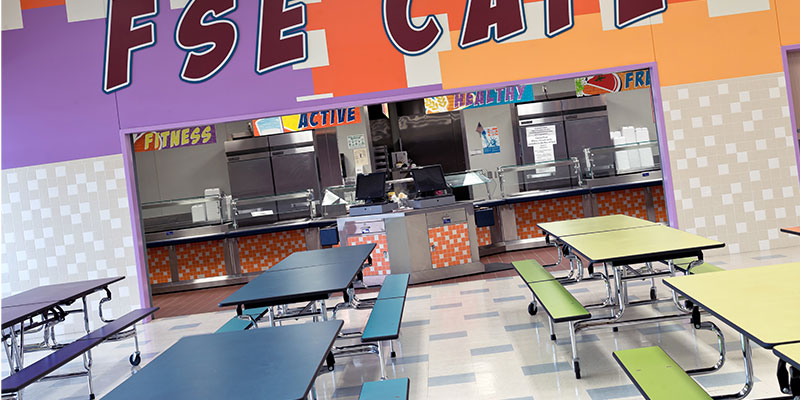
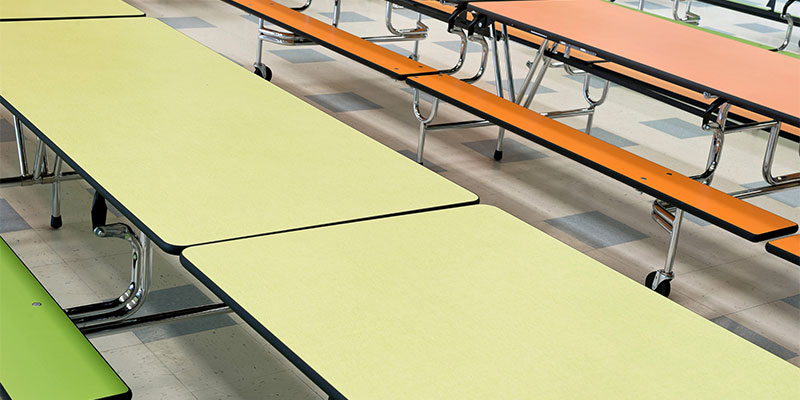
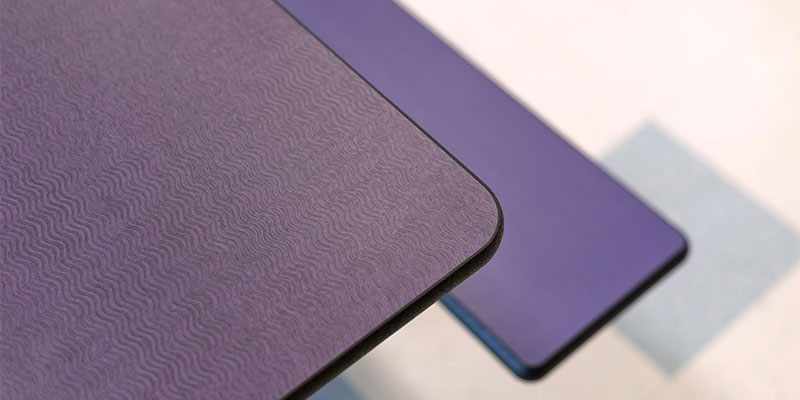
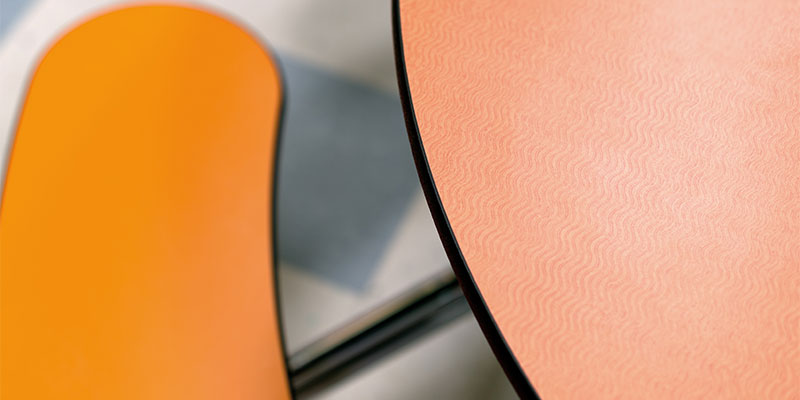
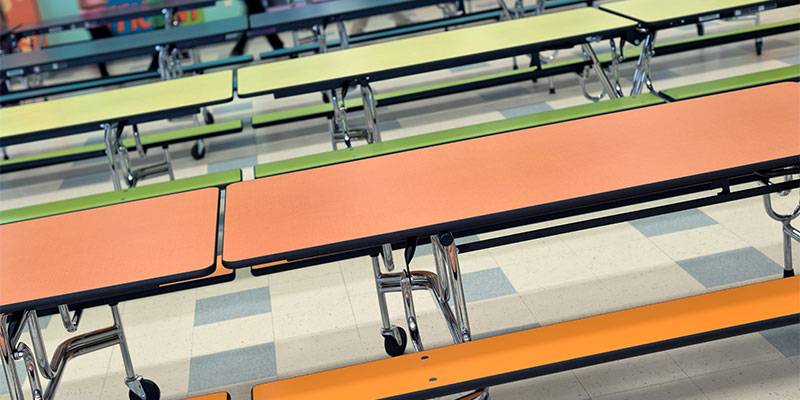
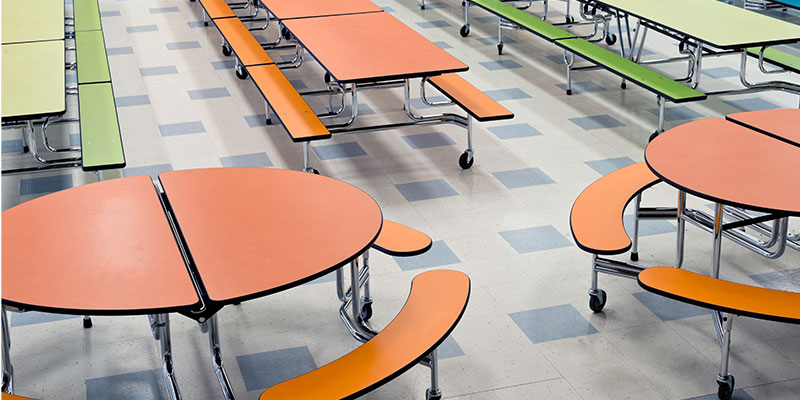




Sign In
Register